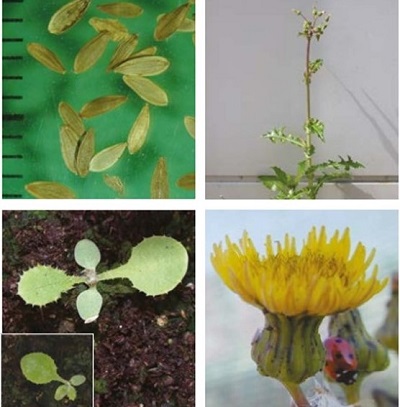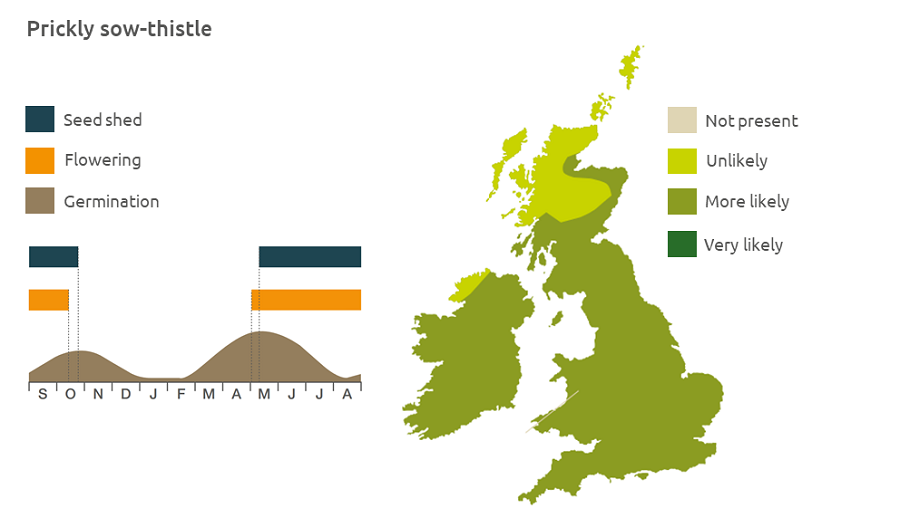- Home
- Knowledge library
- Distribution and biology of prickly sow-thistle in the UK
Distribution and biology of prickly sow-thistle in the UK
A broad-leaved weed, prickly sow-thistle is found throughout the UK and mainly occurs in vegetable crops. Find out how to identify and control it.
Overview
Prickly sow-thistle (Sonchus asper) is less common on arable land than it once was. It occurs mainly in vegetable crops, but can be found in cereals and increasingly in other winter crops. Plants which germinate in autumn overwinter as rosettes, producing flowers in May; plants germinating in spring flower in June. The latter can set seed in 10 weeks. Prickly sow-thistle only reproduces by seed and is distributed by wind.
- It has value to biodiversity
Description
It is an upright annual dicotyledon growing to 120 cm. Flowers are pale yellow in loose clusters.
Key features
Plant: The glossy leaves are a rich green and have sharp prickly edges and rounded bases which clasp the stem.
Leaves: The petals are red grey underneath.

Location and life cycle

Geographic distribution
Prickly sow-thistle inhabits a wide variety of lowland places including verges, waste ground, railway lines, field margins of arable fields and gardens.
Soil type
It likes nitrogen-rich loams or nutrient-rich sandy and stony soils which are not too dry.
Seed statistics
- Seed longevity: >5 years
- Germination depth: 5 cm
- Seed weight: 0.25 mg
- Seeds/head: 100
- Seeds/plant: 5,000
Management
In row crops, hoeing can be used for control where herbicides are not available. In winter cereals, use fallows to reduce seed production. Prickly sow-thistle does not persist in grassy rotations.
For advice on herbicides, please speak with your agronomist or adviser.
When was this information last updated?
This page is based on content from the encyclopaedia of arable weeds publication. Since it was first released in 2008, the publication has been redesigned several times but not revised. However, it remains a good foundation for general information on the distribution and biology of weeds.

